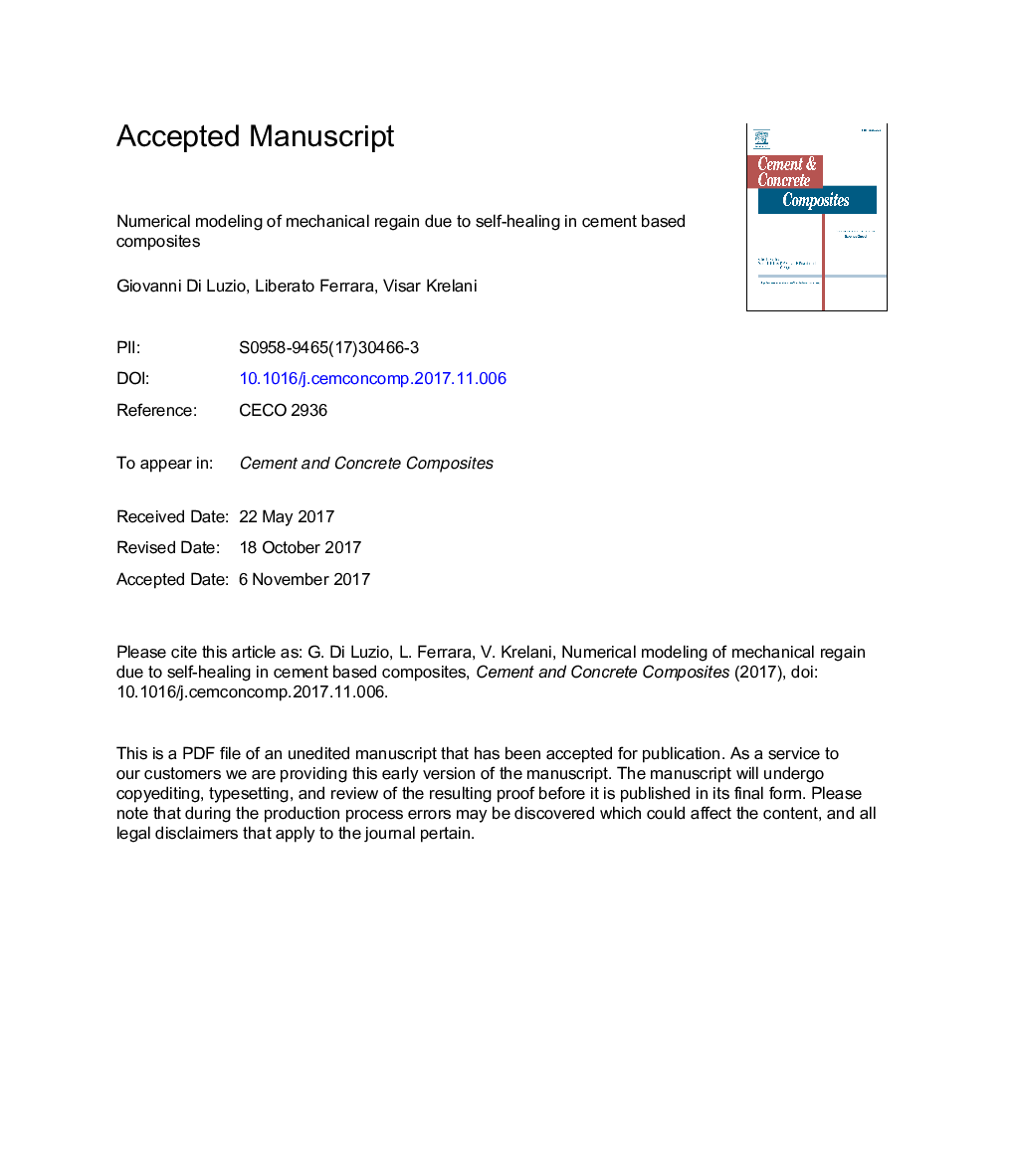| Article ID | Journal | Published Year | Pages | File Type |
|---|---|---|---|---|
| 7884062 | Cement and Concrete Composites | 2018 | 33 Pages |
Abstract
Recently there has been an increasing interest in self-healing materials which have the ability to retrieve their physico-mechanical properties once the material is damaged. This paper presents a numerical model for the self-healing capacity of cementitious composites capable of simulating the recovery of mechanical properties of the damaged (cracked) material. The recent SMM (Solidification-Microprestress-Microplane model M4) model for concrete, which makes use of a modified microplane model M4 and the solidification-microprestress theory, is able to reproduce the concrete time-dependent behavior, e.g. creep, shrinkage, thermal deformation, aging, and cracking from early age up to several years. The moisture and heat fields, as well as the hydration degree, are obtained from the solution of a hygro-thermo-chemical problem which is coupled with the SMM model. This numerical framework is extended to incorporate the self-healing effects and, in particular, the effect of delayed cement hydration, which is the main cause of the self-healing for young concrete. The new update model can also simulate the effects of cracking on the permeability and the opposite restoring effect of the self-healing on the mechanical constitutive law, i.e. the microplane model. A numerical example is presented to validate the proposed computational model employing experimental data from a recent test series undertaken at Politecnico di Milano. The experimental campaign has dealt with a normal strength concrete, in which (by means of three-point-bending tests performed up to controlled crack opening and up to failure, respectively before and after exposure to different conditioning environments) the recovery of stiffness and load bearing capacity has been evaluated.
Keywords
Related Topics
Physical Sciences and Engineering
Engineering
Industrial and Manufacturing Engineering
Authors
Giovanni Di Luzio, Liberato Ferrara, Visar Krelani,
